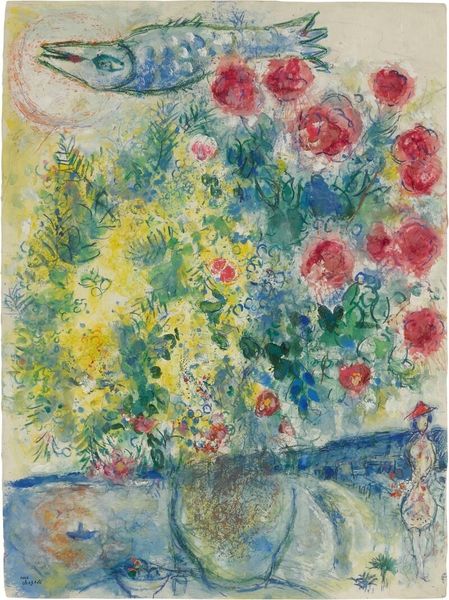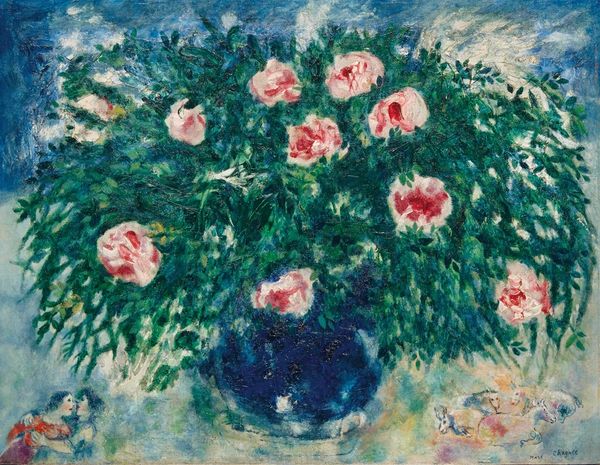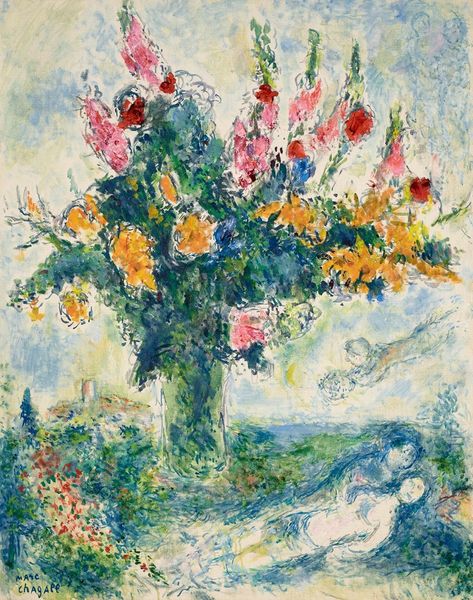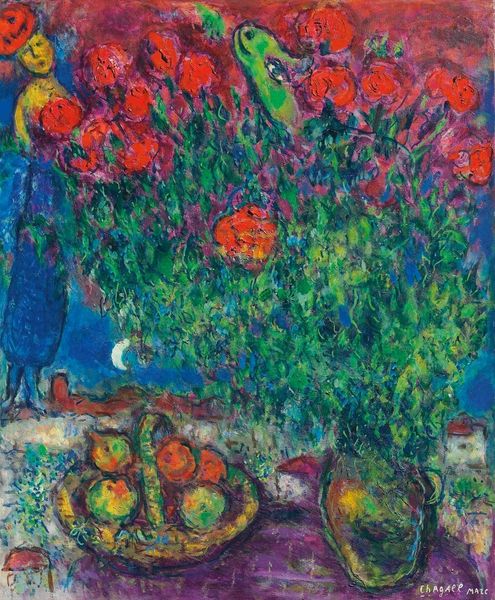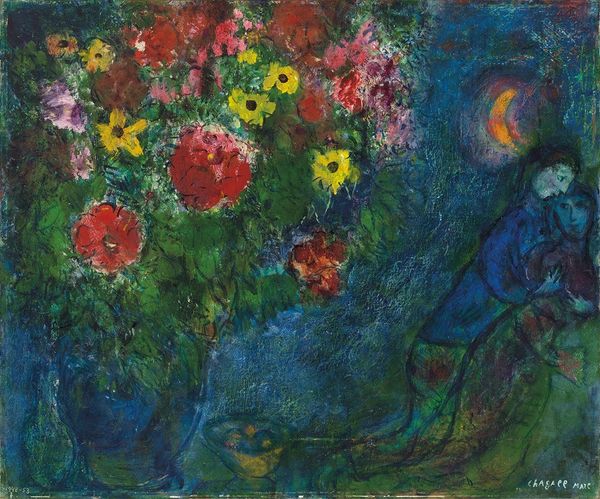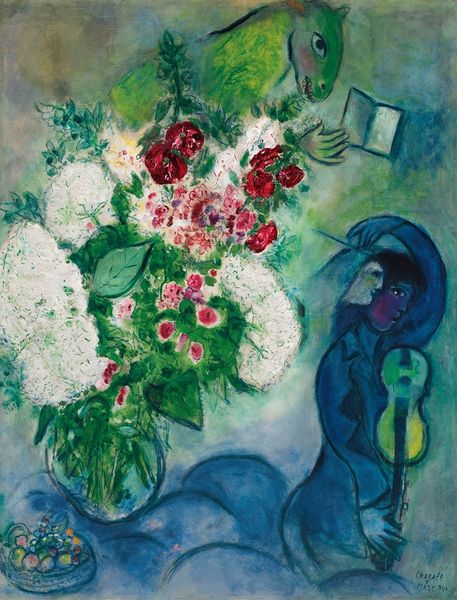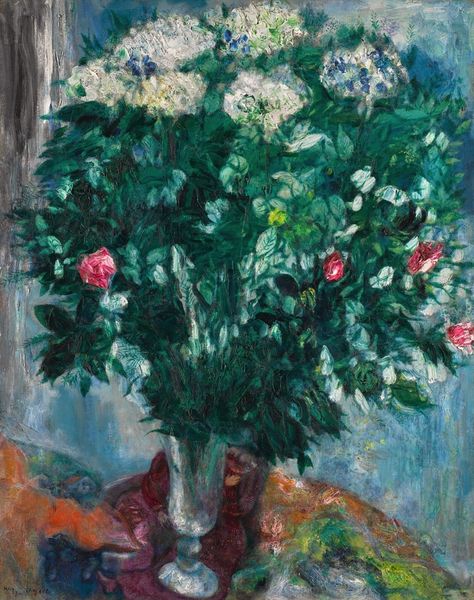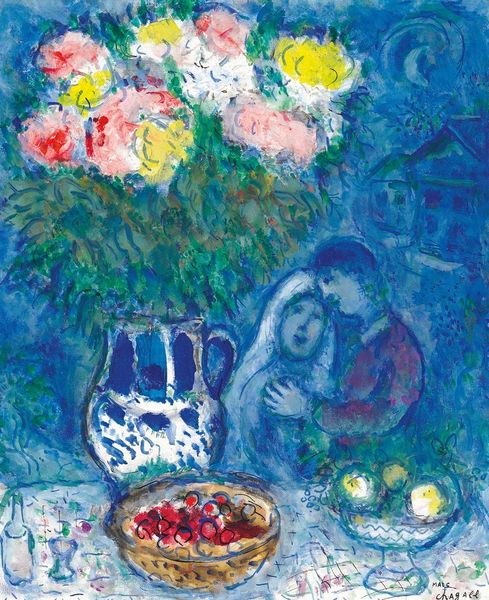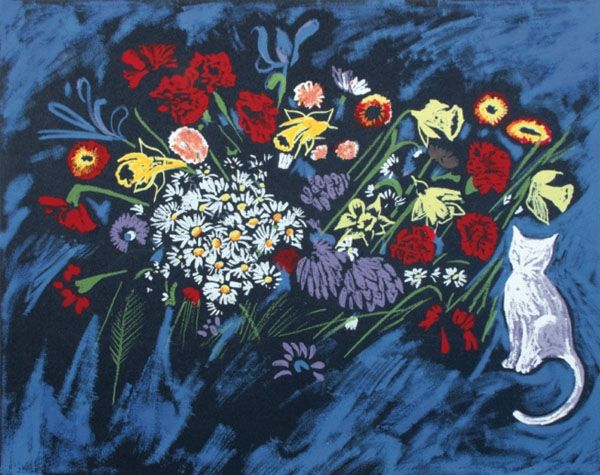
Copyright: Modern Artists: Artvee
Curator: Marc Chagall's "Les Pivoines," or "The Peonies," painted in 1969, greets us. It's an oil painting that marries still life with cityscape in a rather dreamlike manner. Editor: My immediate impression is one of almost overwhelming vibrancy, yet it's anchored by a profoundly melancholic, nocturnal blue. The textures jump right out at me. Curator: Note the application of paint. The impasto is particularly evident in the rendering of the blooms, creating a palpable sense of volume and dimension. Chagall manipulates the materiality of the paint to mimic the lushness of the flowers themselves. Editor: And these flowers, so centrally placed! Peonies, of course, carry strong associations. In many cultures, they are symbols of prosperity, love, and even healing. This positions them as almost beacons within the darker cityscape backdrop. Curator: Yes, there’s a clear juxtaposition. Chagall blurs the line between foreground and background. Consider how the architectural forms become almost fluid, dissolving into the overall chromatic field, lacking sharp contours. This flattening is quite intentional. Editor: He masterfully synthesizes the material world with elements of the fantastic. Look above the rooftops; a floating figure, and a hovering bird. The iconography speaks to a yearning for the transcendent, and the deeply personal realm of memory. Birds in particular are very common motifs for Chagall, standing for the soul rising up to Heaven. Curator: Indeed. Formally, the painting resists strict categorization. One might consider it within the broader scope of Expressionism, though it has stylistic qualities reminiscent of Fauvism, particularly in the bold deployment of color. The lack of conventional perspective creates a disorienting yet compelling visual space. Editor: Ultimately, I see this piece as an intensely private landscape, one deeply interwoven with personal symbolism. "Les Pivoines" exists not just as a collection of forms and colors but as a visual poem—lyrical and intensely felt. Curator: I appreciate how this close reading allows us to acknowledge Chagall's profound grasp of material properties as an equal and indispensable component to any semantic reading. Editor: And perhaps through these symbols, Chagall invites us to explore our own inner landscapes.
Comments
No comments
Be the first to comment and join the conversation on the ultimate creative platform.

